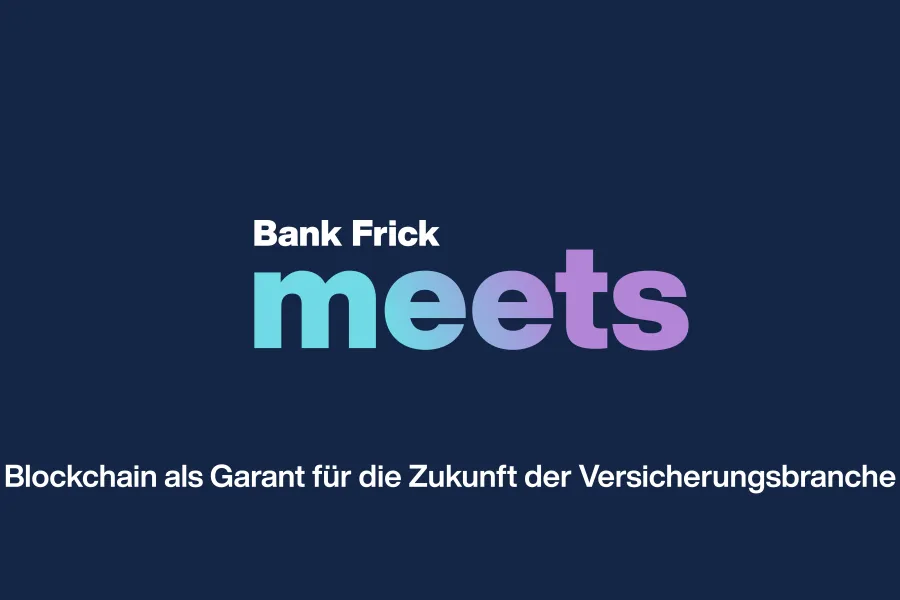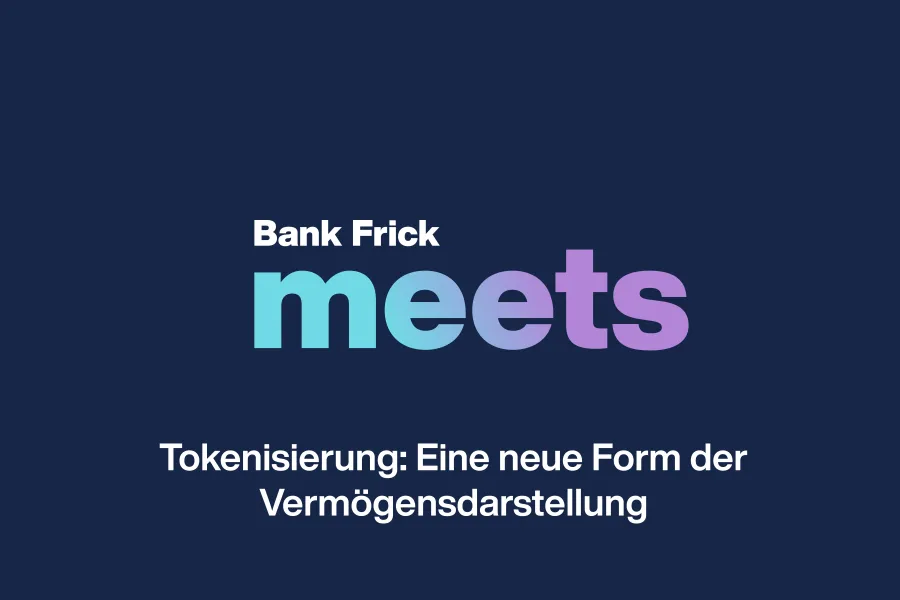From ICOs to token offerings
While more funds were collected with initial coin offerings (ICOs) in 2018 than ever before, the still relatively young market remained exposed to considerable influences. Following significant price losses and regularly occurring cases of fraud, regulators around the world are increasingly devoting their attentions to the risks and opportunities of this new asset class – and this is especially true of the U.S. Securities and Exchange Commission (SEC). Issuers and investors are welcoming the emerging legal certainty, as there is no real interest in a Wild West environment. Their focus is therefore being placed on the regulated version of an ICO – the security token offering (STO). A successful process needs to be planned, however.
Despite the significant price losses suffered by established tokens such as Bitcoin and Ethereum last year, ICOs steadily grew in popularity in 2018, a development primarily reflected in their volume – not to mention the media attention they garnered. Based on the data of CoinDesk, more than three times as many funds were collected with ICOs during 2018 than in the preceding year. This development went hand in hand with an increase in the average ICO volume from USD 8 million in 2017 to USD 10 million in 2018. ICOs are therefore also likely to represent an interesting alternative to venture capital financing in future.
| 2014 | 2015 | 2016 | 2017 | 2018 | |
|---|---|---|---|---|---|
| ICO Size ($mn) | 9 | 30 | 256 | 5482 | 16718 |
| Average | 1 | 4 | 6 | 16 | 26 |
| Median | 1 | 2 | 1 | 8 | 10 |
| Max | 5 | 18 | 152 | 262 | 4200 |
| Std. Dev. | 2 | 7 | 23 | 28 | 173 |
| Number of ICOs | 7 | 7 | 43 | 343 | 650 |
ICO development; source
Changing terminology – legal questions persist
Empirical analysis thus confirms the trend towards this innovative and, in many cases also more efficient form of project and corporate financing. In practice, however, there is still no international consensus with respect to their declination, which is why a precise definition would be desirable for the future.
The terms coin and cryptocurrency likely originated from Bitcoin, the alternative payment system that was presented in 2009 in the whitepaper of Satoshi Nakamoto. Subsequently, meta-terms became established for all new projects set up with the help of blockchain technology. The ICO also originates from this time – similar to a classic initial public offering (IPO), this involves the first-time public offering of coins.
In order to take account of the heterogeneity of the now more than 2,000 different coins, attempts have been made to establish functional categorisations. Since February 2018, for example, the Swiss Financial Market Supervisory Authority (FINMA) has differentiated between payment tokens (cryptocurrencies in the strict sense), utility tokens and security tokens, although mixed forms can also occur. This differentiation has also been partially adopted by other regulators. The SEC has correctly stated that the classification of a token can change during its life cycle. A survey of the European Securities and Markets Authority (ESMA) has also revealed that, in certain cases, tokens do not have a clear functional character. The following table provides a non-exhaustive overview of the collective terms currently used in different jurisdictions. At an international level, the meta-terms token and crypto assets appear to be winning through. Token is used as a meta-term in this article.
| ABSENDER | BEGRIFF | VERWENDUNG |
| U.S. (SEC) | Digital Assets | Link |
| U.S. (CFTC) | Crypto-Assets | Link |
| U.S. Token Taxonomy Act | Digital Token, Digital Unit, Virtual Currency | Link |
| U.S. (State of Wyoming) | Digital Assets | Link |
| Japan (FSA) | Crypto-Assets | Link, Link |
| Hongkong (SFC) | Virtual Assets | Link |
| Singapur (MAS) | Digital Token | Link |
| Südkorea (FSC) | Virtual Currency | Link |
| UK (FCA) | Cryptoassets | Link |
| LIE | Token | Link |
| CH | Token | Link |
| Malta | Virtual Financial Assets, Virtual Token | Link |
| ESMA | Crypto-Assets | Link |
| FATF GAFI | Virtual Assets | Link |
| AMLD5 | Virtual Currency | Link |
| EBA | Crypto-Assets | Link |
| BIS | Cryptocurrency, Crypto-Assets | Link |
| Worldbank | Token | Link |
| FSB | Crypto-Assets | Link |
| EC | Crypto-Assets | Link |
| IMF | Crypto Assets | Link |
Overview of declinations; own illustration
Classification as securities
Although there is still no common consensus at an international level with respect to when a token falls under (supra)nationally applicable securities law, the US has already taken an initial step here – it opines that almost all tokens qualify as securities. This stance was triggered in no small part by the SEC statement on the issuing and trading of digital assets published in November 2018, which had already been preceded by other speeches and statements. In June 2018 already, William Hinman stated the following: “The digital asset itself is simply code. But the way it is sold – as part of an investment; to non-users; by promoters to develop the enterprise – can be, and, in that context, most often is, a security – because it evidences an investment contract”. The classification as securities and increased reporting obligations were the consequence.
It remains to be seen over the course of the near future, however, where the legal distinctions – depending on the locally applicable securities law – will be made. Nevertheless, a trend towards regulated security token offerings – so-called STOs – has been observed since the second half of 2018. An even better understanding of this development can be obtained by looking at the increasingly systematic crackdown of the SEC.
Cyber enforcement actions of the SEC; source
While ICOs were still a standalone term on the popular industry platforms at the start of last year, explanations of STOs were already becoming ever more frequent by the late summer of 2018. They gradually emerged as the next level, often accompanied by the positive undertone that STOs would not only further advance the market, but also significantly contribute to ensuring its survival by rebuilding trust thanks to their regulatory framework – as can be read on platforms like Medium and BTC-ECHO. This shift becomes apparent upon looking at Google Trends and the declining performance of the search term ICO. Whether the term STO becomes further established or is replaced by other terms remains to be seen.
Performance of the search term “ICO” within the last twelve months; source: Google Trends
Based on the concepts of the classic securities segment, it is logical to talk about token offerings, public token offerings, token private placements or an IPO in the form of tokens. These terms are likely to be known to market participants and leave fewer questions unanswered.
Process planning as the number one priority
Against this background, an efficient and successful process chiefly requires the observance of and compliance with applicable law. The involved players need to precisely define the target markets and clients at the outset in order to involve the respective jurisdiction in the structuring of the marketing strategy. In this dynamic environment, good planning ensures the avoidance of any legal infringements and that the desired result is achieved effectively. There is also the fact that existing knowledge with respect to the efficient launching of public offerings for securities still primarily lies with the investment banks. However, these institutions are continuing to proceed very cautiously on the market for token offerings, meaning that the knowledge transfer process is only taking place very hesitantly, if at all. This is a further reason to break up the existing arcane knowledge and place a focus on planning – primarily with a view to sustainable business success and later efficiency gains.
The issuer or organiser must generally adhere to the legal provisions of their domicile or the state from which the token offering is being conducted. Furthermore, the provisions of all states in which investors are being addressed as part of the token offering must also be observed. Finally, those jurisdictions whose security laws and regulations have extraterritorial effect must be taken into account. For example, any offering made to US persons remains subject to the jurisdiction of the US irrespective of their current place of residence. Any failure to observe the applicable security laws and regulations within this jungle of legislation could, depending on the structure of the token offering and its marketing communication, very quickly lead to a – possibly unintentional – infringement of applicable foreign law. The term public offer is very broadly formulated in many jurisdictions, meaning that, in the absence of the relevant expertise and precautionary measures, a token offering can quickly exhibit all of the features of a public offering due to the holding of a simple roadshow or the publication of a straightforward advertising video on YouTube without geo-blocking and a corresponding disclaimer. In principle, it thus becomes subject to registration and prospectus obligations.
Marketing and compliance go hand in hand
In order to proactively mitigate this considerable risk of infringing local foreign law, it is advisable to already establish a marketing and communication plan as a central element during the planning phase of the token offering. In cooperation with the supporting law firm and other project partners, the intended marketing and communication strategy can in such cases already be reviewed at a very early stage with respect to its feasibility, objectives and effectiveness in order to subsequently gear the token offering’s legal structure towards the defined target countries and target investors in a tailored manner.
The primary objective of the issuer is to achieve a public offering in as many jurisdictions as possible, thus allowing it to address an optimally broad investor base. The increasing costs that have to be spent to ensure compliance with the local legislation in each additional target country set the limits here – depending on the case in question. Like classic IPOs, the balance between costs and effectiveness needs to be decided upon for each new token offering. One solution is to combine public offerings in the primary target markets with private placements for professional investors in secondary target markets. A distribution strategy such as this should subsequently provide a reliable overview that serves to determine all follow-up activities, thus ensuring a successful offering. This in turn also simplifies ongoing work and future projects.
Practical design of publicity guidelines
To this end, it is advisable to define publicity guidelines, which have always been part of contracts for classic IPOs. These set the permitted framework for everyone involved in the token offering project team with respect to who communicates the details of the token offering, what is communicated, when and where communication is provided and how this communication takes place. These guidelines also proactively take account of applicable foreign law – especially in the US. The relevant restrictions must be observed, including in connection with public relations, in order to avoid a registration obligation under US federal law. The prospectus obligation associated with securities also requires that any information provided to the public during the offering process does not contradict facts contained in the prospectus or significantly add to them.
Publicity guidelines thus prevent unnecessary conflicts and provide an efficient tool for a targeted marketing and communication strategy, which ensures the legitimacy and professionalism of the token offering.
In an offering context such as this, the basis is provided by a very broadly defined concept of external communication, which incorporates all kinds of verbal (discussions, press conferences, news pieces, etc.), written (press releases, etc.) and electronic (websites, DVDs, etc.) statements – including advertising measures that do not relate to the offering but which could nevertheless give rise to investor interest. The notion of information – the actual reference to the offering within the described communication – is likewise broadly formulated and in addition to information on the offering itself also includes references to the company and other products as well as opinions or forecasts that could give rise to (financial) expectations.
Against this background, publicity guidelines specify the stipulated restrictions that must be observed by everyone who is involved with communication measures relating to the offering (including external advisors, agencies, etc.). The publicity guidelines generally apply within the relevant period, i.e. from the time of approval (at the beginning of the token offering planning process) to a few weeks after the commencement of trading or the placement of the tokens.
The structure of such publicity guidelines is presented below.
|
1. Communication restrictions a) Definition of publicity and information concept |
|
2. Legal requirements a) As per local law of the issuer/provider |
|
3. Compliance a) Internal procedures for ensuring compliance with the guidelines |
Structure of publicity guidelines; own illustration
The section on restrictions primarily serves to form a consensus with respect to the handling of the public, provides the framework conditions for later marketing activities and leads to consistent communication. The third section on compliance regulations includes the designation of an individual responsible for the guidelines who monitors all communication and specifies the forwarding of the publicity guidelines to the Management Board and involved parties such as PR agencies. Both sections can be adopted for further projects. Lawyers and law firms that focus on the capital market are familiar with publicity guidelines and can help with their preparation in the case in question.
Positive development
The triumphant march of token offerings will continue further due to their legal structure and they may possibly replace ICOs (in the classic sense) in the not too distant future. The basis for this development is primarily formed by viable, transparent and successful investment cases. Their regulatory classification as securities serves as both a seal and protective shield, something required by investors for classic securities in any case – on the one hand, in order to assert a claim to quality in light of the massive number of fraud cases that emerged for ICOs last year and, on the other hand, in order to escape the crackdown by regulators who are now no longer simply watching on. This will have a positive impact on the market and ensure further professionalisation. The individual decision between a public offering and private placement, between a classic security or a token and with respect to the optimal distribution strategy is then a purely economic consideration. It is to be expected that issuers of security tokens will take their lead from classic securities structures in order to replicate an already known and trusted form using tokens. This will save unnecessary declarations on the part of issuers and ensure efficient due diligence with respect to the token offering for interested investors.
At present, the distribution focus for a token offering still increasingly needs to be placed on the monitoring of target jurisdictions, as tokens and especially security tokens – unlike classic securities – remain subject to regulatory dynamics. Although the classification as securities initiated by the SEC is an important step, this is by no means the last word, as new laws can be passed quickly elsewhere.
The Law on Transaction Systems Based on Trustworthy Technologies (TT) (Blockchain Act; TT Act; VTG) planned by Liechtenstein, which not only addresses individual applications, but rather the token economy as a whole, and in addition to the definition of tokens will ensure the provision of basic information for all public token offerings, is a good example of an elegant and efficient legal solution that could potentially act as a precedent at an international level.
Thanks to their technical characteristics – allowing for cross-border trade without the sometimes massive hurdles posed by various clearing systems – tokens provide the opportunity to bring together local financial markets, which in some cases are largely closed off at present, to form a common, global capital market. How national supervisory authorities will deal with the consequences of greater international cooperation and the associated loss of autonomy and sovereignty with respect to intervention remains to be seen.
Share post


Auch interessant

Vom Code zur Wirkung: Mit Blockchain zu mehr Transparenz und Effizienz
Die Blockchain-Technologie, bekannt geworden durch Laszlo Hanyecz' berühmten Pizzakauf 2010, hat sich weit über digitale Währungen hinaus entwickelt. Mit ihren Eigenschaften – Dezentralisierung, Transparenz und Unveränderbarkeit – ermöglicht sie effiziente und sichere Transaktionen ohne Mittelsmänner. Besonders Smart Contracts haben die Einsatzmöglichkeiten der Blockchain erweitert, etwa in Bereichen wie Lieferketten, Automatisierung und grenzüberschreitende Zahlungen.
Kritiker äußern Bedenken hinsichtlich Energieverbrauch und Komplexität, doch moderne Blockchains sind energieeffizienter geworden und durch benutzerfreundliche Schnittstellen leichter zugänglich. Im Non-Profit-Sektor bietet Blockchain großes Potenzial: Spenden können transparent, kostengünstig und nachvollziehbar vom Spender direkt zum Empfänger übertragen werden, wodurch Effizienz und Wirkungsnachweis deutlich verbessert werden. Die Technologie markiert somit den Beginn einer neuen Ära von Vertrauen und Zusammenarbeit.

Einblicke in den Prozess der Gestaltung von AMCs
Actively Managed Certificates (AMCs) haben sich zu einem bedeutenden Bestandteil des europäischen Finanzmarktes entwickelt. Als strukturierte Produkte, rechtlich als Schuldverschreibungen klassifiziert, bergen sie für den Investor ein entsprechendes Gegenparteienrisiko, vergleichbar mit anderen strukturierten Finanzprodukten. AMCs werden in Form von Wertpapieren verbrieft, die den jeweiligen Inhaber das Recht auf Geldrückzahlung oder Lieferung eines Basiswertes geben. Durch den Erwerb wird der Investor somit zum Gläubiger des Emittenten und begibt sich in eine Abhängigkeit im Hinblick auf die Art und Höhe der Rückzahlung, die von verschiedenen Parametern abhängig ist.

Direct Market Access – Effiziente Handelsabwicklung für Fondsstrategien
Liechtenstein verfügt über eine langjährige Tradition in den Bereichen Banking und Asset-Management. Seit dem EWR-Beitritt im Jahr 1995 hat sich der liechtensteinische Finanzplatz sukzessive als fachkundige Anlaufstelle für Promotoren von kollektiven Anlagestrukturen auf dem europäischen Finanzmarkt etabliert.

Blockchain als Garant für die Zukunft der Versicherungsbranche
Der Versicherungsmarkt ist ein wesentlicher Bestandteil der Weltwirtschaft und deckt sowohl persönliche als auch geschäftliche Risiken ab. Es ist daher nicht verwunderlich, dass es sich um eine der grössten Branchen der Welt handelt, die einen geschätzten Wert von etwa 5 Billionen US-Dollar aufweist und rund 2,7 Millionen Menschen auf der ganzen Welt beschäftigt. Von den 5 Billionen US-Dollar entfallen rund 3,7 Billionen US-Dollar auf den weltweiten Lebensversicherungsmarkt, während der Wert des Schaden- und Unfallversicherungsmarktes bei 1,3 Billionen US-Dollar liegt.

Tokenisierung: Eine neue Form der Vermögensdarstellung
Seit Anbeginn der Zeit haben die Menschen gejagt und gesammelt und sich das, was sie fanden, zu eigen gemacht. Dies ist die Zeit, in der das Konzept der besitzfähigen Vermögenswerte zum ersten Mal auftaucht, wenn auch nur in rudimentärer Form. Seitdem haben sich die Vermögenswerte weiterentwickelt und sind komplexer geworden, weil die Menschen zuverlässigere Wege gefunden haben, Vermögenswerte mit Menschen zu verbinden. Heutzutage schliessen Menschen bei der Übertragung von Vermögenswerten Verträge ab.

Blockchain: A technology with social impact
Foundational technology is the most effective tool for impacting society at large and solving the challenges it is faced with. One such foundational institutional technology is the blockchain, which entered the picture through the discovery of Bitcoin in 2009 and has since proliferated and emerged in many different forms.
What does blockchain’s social impact look like?

Wie uns Blockchain-Technologie in der digitalen Zukunft vor Angriffen schützt
Die Blockchain-Industrie verzeichnet seit einigen Jahren ein signifikantes Wachstum. Krypto-Start-ups schiessen aus dem Erdboden, und eines nach dem anderen scheint sich als «Einhorn» zu erweisen. In unserer neuen Reihe werden wir diese Technologie in Blogposts und Webinaren genauer unter die Lupe nehmen und erörtern, weshalb sie so erfolgreich ist und überall im Zentrum des Interesses steht. Dabei werden wir uns weniger mit dem spekulativen Aspekt befassen, mit dem die Blockchain häufig in Verbindung gebracht wird, sondern vielmehr untersuchen, inwiefern sie reale Probleme lösen kann.

Wie klassische Finanzintermediäre in der Krypto- und Blockchain-Welt Fuss fassen können
Mit zunehmender Selbstverständlichkeit fragen immer mehr Kunden nach Dienstleistungen rund um Kryptowährungen. Für Finanzintermediäre eröffnet diese Nachfrage neue Geschäftsmöglichkeiten. Um das Potenzial heben zu können, müssen die Akteure aber auch das Spezialwissen zur Verfügung haben.

Blockchain technology reinvents correspondent banking – just not yet
As one of its major use cases, blockchain technology is said to transform traditional correspondent banking. So far major challenges have pushed back this transformation. It is more likely than ever that with central bank digital currencies on the horizon; blockchain disruption will finally come to fruition in the realm of cross-border banking.

Turning crypto investment into an earning asset
With Ethereum upgrading to Proof of Stake, the crypto world is going through one of its most transformative shifts to date. This means that customers will soon be able to earn interest on their digital asset holdings through a process called staking. What staking is, how it will define the future of Ethereum and digital asset custody at large is explained in this article.